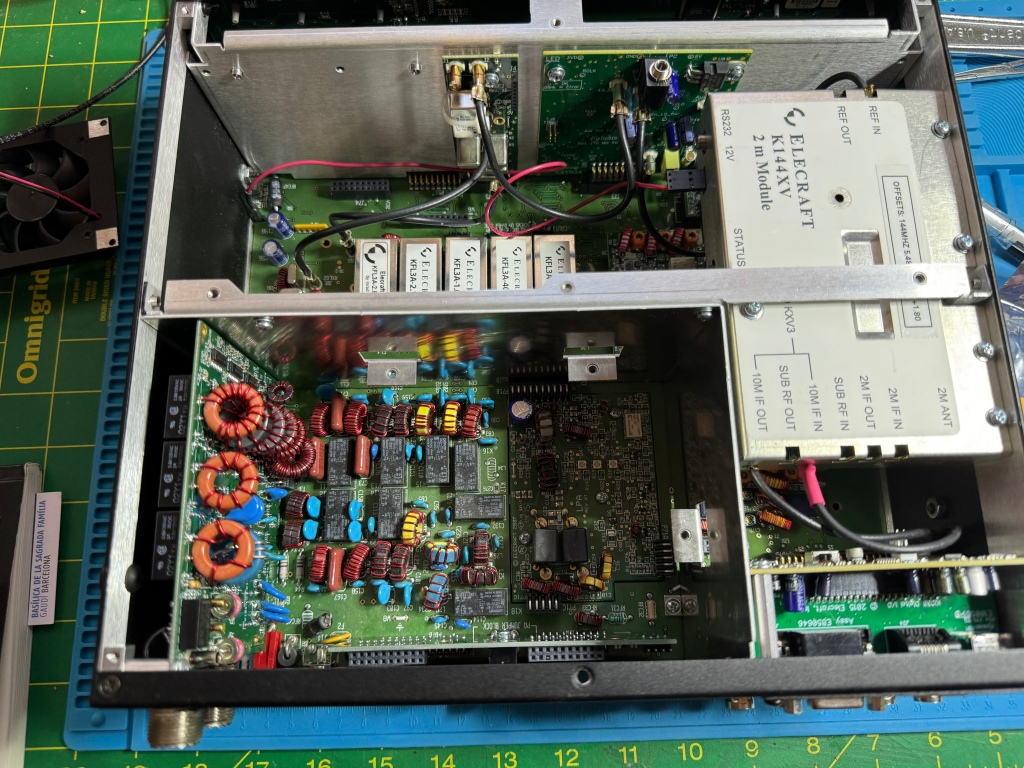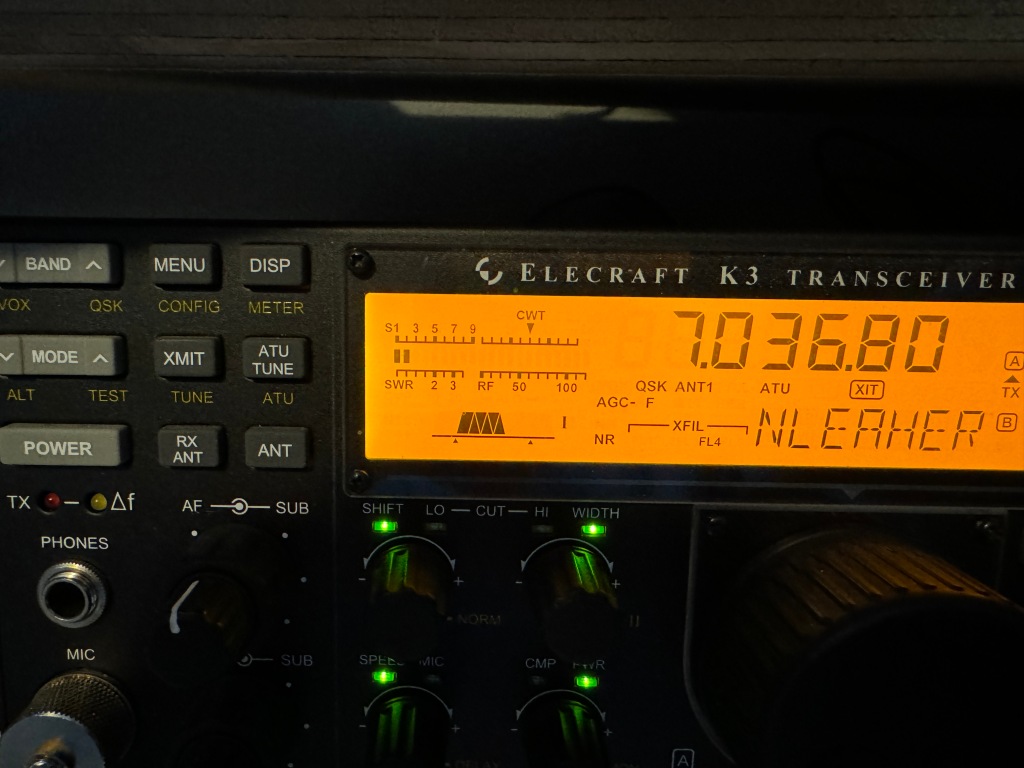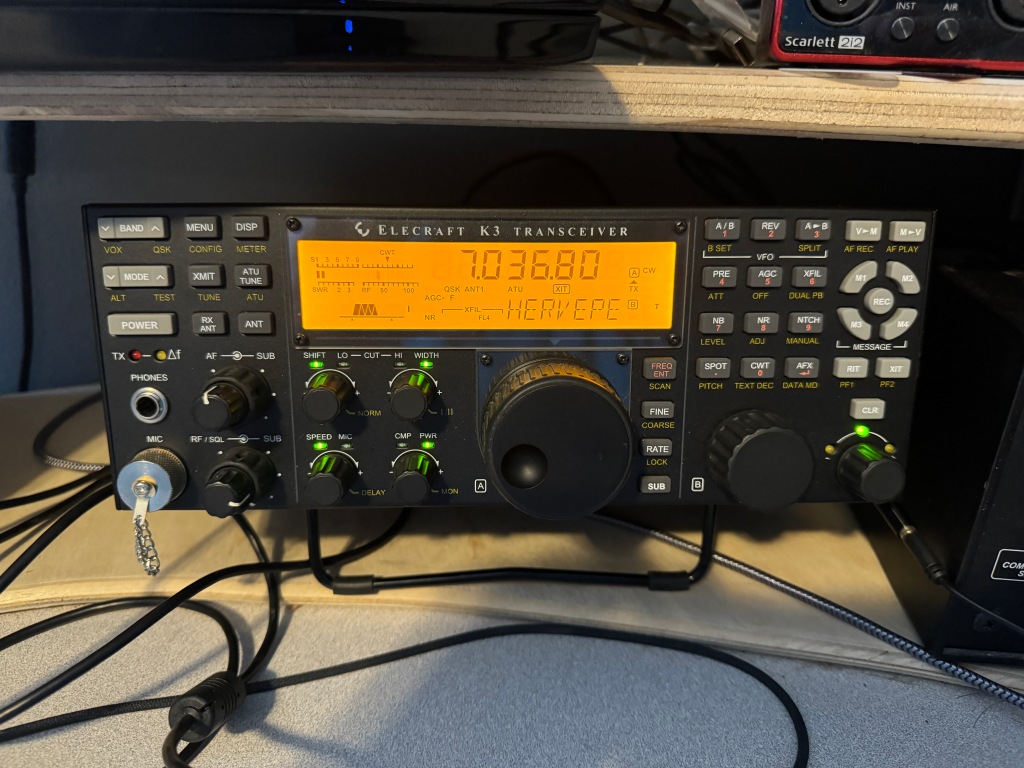
Carlos is my Elecraft K3…”cause he’s so smooth”. I’ve had Carlos since June, 2023. He came to me as a basic 10 watt K3. He had the 144 MHz K144XV, the KXV3 interface option and 2, 5-pole filters. I got the radio in a trade. Owning a K3 always lingered in the back of my mind, so I took the trade. That started my journey.
Carlos has gone through several iterations since I got him. First I swapped out the 2, 5-pole filters for 5, 8-pole filters (2.8 KHz, 2.1 KHz, 1.0 KHz, 400 Hz, and 250 Hz). Second, I added the KAT3 autotuner. I wanted the internal tuner so I would have less stuff to fool with when using antennas like my random wire. My next upgrade was to add the KSYN3A synthesizer and KIO3B interface. This brought my radio up to a K3S. Finally, I added the KPA3 – 100 watt internal amplifier. I wanted the amp for a couple of reasons. I enjoy Winter Field Day and ARRL Field Day with my club, the West Georgia Amateur Radio Society. I am currently one of 2 CW ops in the club so I usually run CW to help with multipliers. The QSK, the filters, and the ability to run near other radios makes it a no brainer. Also, when I operate portable while camping, I like to run a little more power than QRP; usually in the 20-35 watt range. That is more than enough power for CW. I did all the mods myself and found them pretty straight forward. Elecraft did an excellent job kitting and making the instructions. The couple times I had an issue and they were mine, Elecraft did an excellent job helping me work through it. I did have to send it in last year because of a goof I made, but while it was in the shop, they completely went over the radio and brought it up to spec.

Carlos does scratch a couple of itches. To me, it is like owning a vintage car. It has a nostalgic look and feel about it. The radio was produced from 2008 until about 2015 when the K3S came out. Mine is a later edition with the serial number 8640. The radio is a generation or more older than the current flock of radios. Like a vintage car, I may have more money into it than I should have, but if only accounting for the enjoyment factor, it is money well spent.
I was first licensed in 1995 and my first radio was an old TenTec Omni D. The K3 has a similar look and feel as the old TenTec allowing me to reminisce about all the fun I had as a Tech+ making my first HF contacts using CW. During that time I worked second shift. When I came home from work at night I was able to slip on a pair of headphones and make contacts wihtout disturbing the family until I was sleepy enough to go to bed. My first DX contacts happened then. The K3 gives me the form factor of the older radios with the performance of the newer radios. One other difference is the ergonomics of the K3, which is best in class.

I was considering acquiring an older radio for fun and the K3 fell into my lap. It has become one of my favorite radios. I use it portable for things like POTA and Field Day. Because of its QSK, it is my favorite CW radio. When not in the field, it resides on my desk as a part of the home team. I have a set of paddles and a sideswiper hooked up to it. Hopefully I will get some time today to have some CW fun. 73 — Scott

